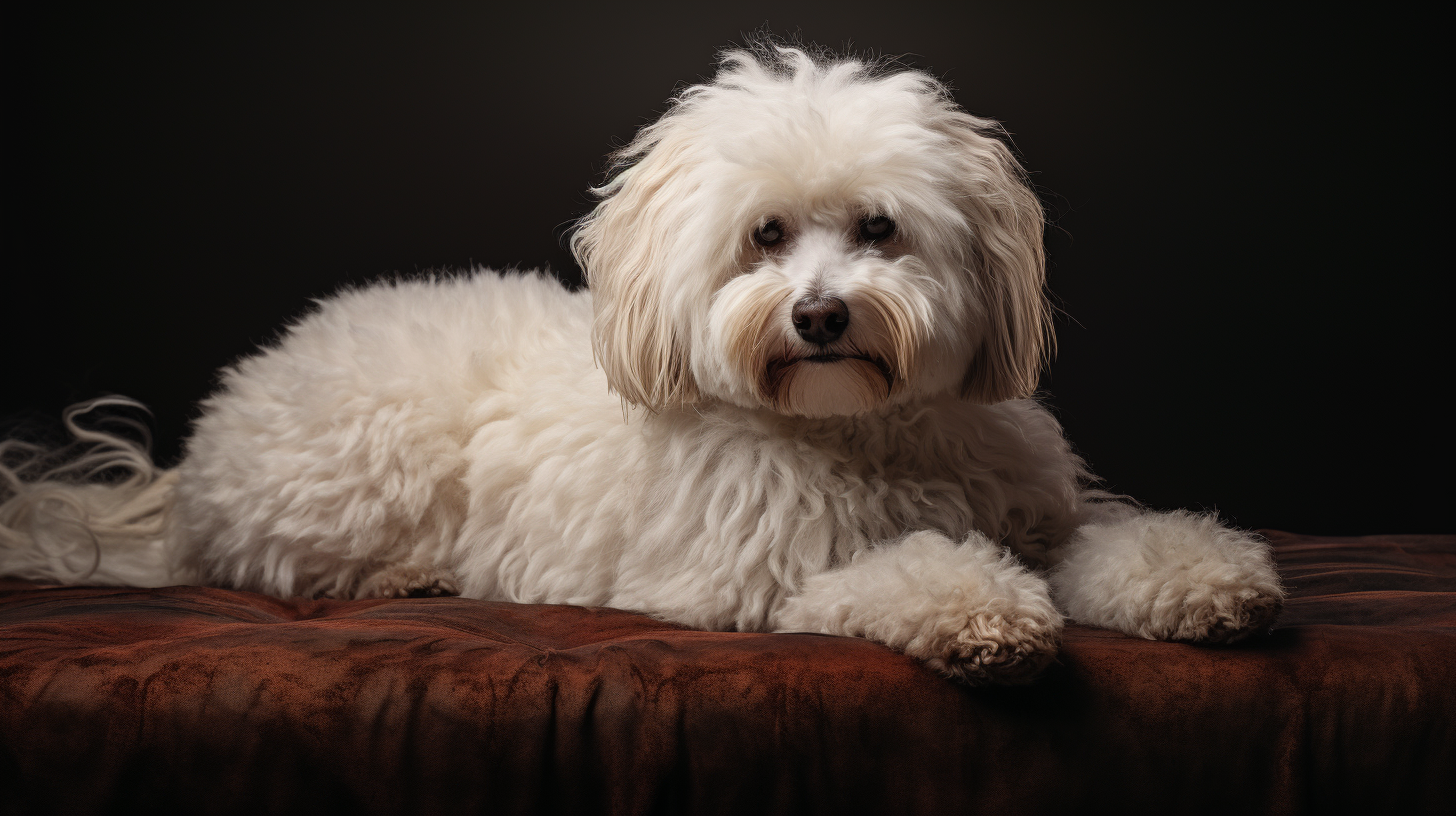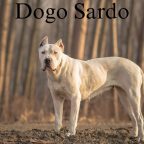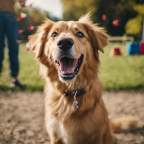- Key Takeaways
- History and Origin of the Bolognese Dog
- Characteristics and Physical Traits of the Bolognese Dog
- Adaptability and Living With a Bolognese Dog
- Trainability and Intelligence of the Bolognese Dog
- Prey Drive, Mouthiness, and Behavioral Concerns in Bolognese Dogs
- Tendency to Bark, Wanderlust Potential, and Exercise Needs of the Bolognese Dog
- Intensity and Playfulness of the Bolognese Dog
- Personality and Characteristics of Bolognese Dogs
- Ideal Owner and Training for Bolognese Dogs
- Nutrition and Grooming Tips for Bolognese Dogs
- Frequently Asked Questions
- We hope you enjoyed the article and see you in the next
Click and GO TO THE BEST DOG NAME GENERATOR HERE

Are you looking for a loyal and affectionate companion? Look no further than the Bolognese dog! This little bundle of joy is as charming as they come. With their soft, fluffy coat and expressive eyes, they are sure to steal your heart.
Whether you’re an experienced dog owner or new to the world of pets, the Bolognese dog is adaptable and easy to train. In this article, we will delve into the history, characteristics, and care tips for this delightful breed.
So let’s dive in and learn all about the wonderful world of Bolognese dogs!
- Key Takeaways
- History and Origin of the Bolognese Dog
- Characteristics and Physical Traits of the Bolognese Dog
- Adaptability and Living With a Bolognese Dog
- Trainability and Intelligence of the Bolognese Dog
- Prey Drive, Mouthiness, and Behavioral Concerns in Bolognese Dogs
- Tendency to Bark, Wanderlust Potential, and Exercise Needs of the Bolognese Dog
- Intensity and Playfulness of the Bolognese Dog
- Personality and Characteristics of Bolognese Dogs
- Ideal Owner and Training for Bolognese Dogs
- Nutrition and Grooming Tips for Bolognese Dogs
- Frequently Asked Questions
- We hope you enjoyed the article and see you in the next
Key Takeaways
- The Bolognese dog has a rich and fascinating breed history, dating back to the Roman Empire.
- The breed faced a decline in numbers during World War II but was saved from extinction through dedicated breeding efforts.
- The Bolognese dog is small, weighing between 5 to 9 pounds and standing at about 10 to 12 inches tall.
- Bolognese dogs are highly trainable and intelligent, with excellent cognitive abilities and a great learning potential.
History and Origin of the Bolognese Dog
The Bolognese is a small breed that has a rich and fascinating breed history. Its development can be traced back hundreds of years, with its early ancestors believed to have existed as far back as the Roman Empire. These dogs were highly valued by Italian nobility and were often seen accompanying them in royal courts and palaces.
Despite their long history, the breed faced a decline in numbers during World War II but was saved from extinction through dedicated breeding efforts. Today, the Bolognese is recognized as a distinct breed by various kennel clubs worldwide, including the American Kennel Club (AKC), providing it with official recognition and protection.
Characteristics and Physical Traits of the Bolognese Dog
One of the key characteristics of the Bolognese breed is its small size. These adorable dogs typically weigh between 5 to 9 pounds and stand at about 10 to 12 inches tall. Despite their tiny stature, Bolognese dogs have a sturdy and compact build.
Their coat is another distinctive feature, consisting of a soft and fluffy texture that is pure white in color. This beautiful coat requires regular grooming to prevent matting and keep it looking pristine.
In terms of temperament, Bolognese dogs are known for being affectionate, intelligent, and eager to please. They form strong bonds with their owners and love to be involved in family activities. With proper socialization and behavior training, they can get along well with children and other pets.
When it comes to health, Bolognese dogs are generally robust but can be prone to certain conditions like patellar luxation or eye problems. With proper care, they have an average lifespan of around 12-14 years.
Overall, the Bolognese dog is a delightful companion with its small size, charming appearance, friendly temperament, and manageable grooming needs.
Adaptability and Living With a Bolognese Dog
Living with a Bolognese dog means you’ll need to provide them with plenty of mental and physical stimulation to keep them happy and content. This breed is adaptable and can thrive in various environments, making them great companions for those who move frequently or live in apartments.
Here are some key things to consider when living with a Bolognese:
- Adapting to new environments: Bolognese dogs are known for their ability to adapt well to different surroundings, making them highly versatile pets.
- Living with children: These dogs have a gentle nature and get along well with children, making them an excellent choice for families.
- Dealing with allergies: Bolognese dogs have hypoallergenic coats that shed minimally, which can be beneficial for individuals prone to allergies.
- Socializing with other pets: With proper socialization from an early age, they can coexist peacefully with other pets in the household.
- Managing separation anxiety: Bolognese dogs form strong bonds with their owners and may experience separation anxiety if left alone for long periods. Providing mental stimulation and gradually increasing time apart can help manage this.
Transitioning into the next section about trainability and intelligence of the Bolognese dog, let’s explore how these factors contribute to their overall behavior and interaction patterns.
Trainability and Intelligence of the Bolognese Dog
When it comes to training and intelligence, you’ll be impressed by how quickly the Bolognese dog picks up new commands and tasks. This breed is known for its trainability and high level of intelligence. They have excellent cognitive abilities and a great learning potential, making them ideal candidates for obedience training and learning various tricks and commands.
To keep their minds stimulated, it’s important to provide mental stimulation through problem-solving activities. Interactive toys and puzzle games are a great way to challenge their intelligence and keep them engaged. The Bolognese dog thrives on mental stimulation, so incorporating these activities into their daily routine will ensure they remain happy and content.
Below is a table highlighting the trainability, intelligence, cognitive abilities, learning potential, mental stimulation, problem solving, obedience training, tricks and commands that the Bolognese dog possesses:
| Trainability | Intelligence | Cognitive Abilities |
|---|---|---|
| High | Excellent | Impressive |
| Learning Potential | Mental Stimulation | Problem Solving |
|---|---|---|
| Great | Essential | Challenging |
| Obedience Training | Tricks & Commands |
|---|---|
| Highly Responsive | Quick Learners |
Prey Drive, Mouthiness, and Behavioral Concerns in Bolognese Dogs
- Introduce your Bolognese dog to various environments and experiences from an early age.
- Use positive reinforcement techniques such as treats and praise to reward good behavior.
- Provide your dog with plenty of mental stimulation through puzzle toys and interactive games.
- Redirect unwanted behaviors by offering appropriate chew toys or engaging in playtime.
- Seek professional help if necessary for more challenging behavioral issues.
By addressing these concerns through proper training and socialization, you can ensure a well-behaved and happy Bolognese dog.
Now let’s explore the tendency to bark, wanderlust potential, and exercise needs of the Bolognese breed.
Tendency to Bark, Wanderlust Potential, and Exercise Needs of the Bolognese Dog
To address the tendency to bark, potential for wanderlust, and exercise needs of the Bolognese dog, you should establish consistent training methods and provide regular physical activity. Barking tendencies can be minimized through positive reinforcement training techniques that teach your dog when it’s appropriate to bark. Additionally, daily exercise requirements should include walks or play sessions to help burn off energy and prevent boredom.
The wanderlust potential of this breed means that they may have a strong desire to explore their surroundings, so it’s important to keep them on a leash or in a securely fenced area when outside. Socialization needs are essential for the Bolognese dog as they thrive on interaction with other dogs and people. Mental stimulation requirements can be met through puzzle toys or interactive games.
By addressing these aspects of care, you can ensure a happy and well-adjusted Bolognese companion.
With their energetic nature and love for playtime, the intensity and playfulness of the Bolognese dog make them an entertaining addition to any household.
Intensity and Playfulness of the Bolognese Dog
Now that you understand the exercise needs of the Bolognese dog, let’s delve into their intensity and playfulness.
These little dogs are known for their lively and spirited nature. They have an abundance of energy that they love to channel into playtime with their favorite humans. Here are some key points about their intensity and playfulness:
- They thrive on socialization and enjoy interacting with both people and other animals.
- Their playful nature makes them excellent companions for families with children.
- Regular exercise is crucial to keep their energy levels in check and prevent any destructive behaviors.
- Mental stimulation is important for these intelligent dogs to prevent boredom.
- Training sessions should be incorporated into their routine to ensure obedience.
Personality and Characteristics of Bolognese Dogs
Understanding the personality and characteristics of these little companions will help you appreciate their unique traits. Bolognese dogs are known for their gentle and affectionate nature, making them excellent family pets. They have a calm temperament and are generally friendly towards both humans and other animals. Socialization from an early age is crucial to ensure they grow up to be well-rounded dogs.
Despite their small size, Bolognese dogs have moderate exercise needs. Regular walks, playtime, and mental stimulation through interactive toys will keep them happy and healthy. Training methods should focus on positive reinforcement techniques such as rewards and praises, as these dogs respond well to gentle encouragement.
Personality traits of Bolognese dogs include loyalty, intelligence, and adaptability. They thrive in homes where they receive lots of attention from their owners and are included in everyday activities. These delightful little companions make wonderful additions to any loving home.
Ideal Owner and Training for Bolognese Dogs
If you’re considering getting a Bolognese, it’s important to know that they are best suited for owners who can provide them with lots of attention and include them in everyday activities. These charming little dogs thrive on human companionship and love being involved in their family’s daily life.
Here are some key points to consider when it comes to owning and training a Bolognese:
- Ideal owner: Bolognese dogs do well with individuals or families who have the time and energy to devote to their social needs.
- Training methods: Positive reinforcement techniques work best for Bolognese dogs. Use treats, praise, and rewards to motivate them during training sessions.
- Socialization techniques: Early socialization is crucial for Bolognese puppies. Expose them to different people, animals, sounds, and environments to help them become well-adjusted adults.
- Common behavior issues: Separation anxiety can be an issue with this breed due to their strong attachment to their owners. Proper crate training and gradual alone time can help alleviate this problem.
- Obedience training: Bolognese dogs are intelligent and eager learners. Consistent obedience training will not only improve their behavior but also strengthen your bond with them.
Remember that every dog is unique, so be patient, understanding, and consistent in your approach to training your Bolognese.
Nutrition and Grooming Tips for Bolognese Dogs
Feeding a Bolognese involves providing them with high-quality dog food that meets their nutritional needs. These charming little dogs have specific requirements when it comes to nutrition and grooming. Establishing regular feeding routines is important for their overall health and digestion.
It’s recommended to feed them two small meals a day rather than leaving food out all the time. When it comes to coat care, the Bolognese has a beautiful, fluffy coat that requires regular brushing to prevent matting. Dental hygiene is crucial, so make sure to brush their teeth regularly and provide dental chews or toys to promote oral health.
Despite their small size, Bolognese dogs are energetic and require daily exercise to keep them happy and fit. Shedding control can be achieved by regularly brushing their coat and ensuring they have a balanced diet rich in essential nutrients for healthy skin and coat maintenance.
Frequently Asked Questions
Are Bolognese Dogs Good With Children?
Yes, Bolognese dogs can be great with children. Socialization is important for them to feel comfortable around kids. Start by introducing them slowly and using positive reinforcement training techniques. Owning a Bolognese dog as a family pet has many benefits.
How Often Do Bolognese Dogs Need to Be Groomed?

To keep your Bolognese dog looking their best, regular grooming is key. Their luxurious coat requires frequent brushing to prevent matting and tangling. A grooming routine of 2-3 times a week will help maintain their beautiful fur.
Do Bolognese Dogs Have Any Specific Health Concerns?
Bolognese dogs, like any breed, have specific health concerns. They are generally compatible with children and require regular grooming. These dogs are prone to separation anxiety but have an average lifespan of 12-14 years.
Are Bolognese Dogs Prone to Separation Anxiety?
Yes, Bolognese dogs can be prone to separation anxiety. Understanding the underlying causes is crucial. Training techniques and tips for prevention include gradually increasing alone time, providing mental stimulation, and creating a safe space.
What Is the Average Lifespan of a Bolognese Dog?
The average lifespan of a Bolognese dog is around 12-14 years. They have moderate exercise requirements and need regular grooming to maintain their fluffy coat. Training tips include positive reinforcement, and dietary considerations should be discussed with a veterinarian.
We hope you enjoyed the article and see you in the next
Welcome to our ever-growing collection of Italian Dog Breeds! As we continually dive deeper into the marvelous world of these dogs, you can expect this list to expand further.
We’ve curated this selection for you to explore and enjoy. Remember, your experience matters to us! So, don’t hesitate to tell us which Italian dog breed tugs at your heartstrings the most.
What’s more, we’d absolutely love to see images of these captivating breeds from your personal collection. If you’d like to share, we encourage you to send them in! Immerse yourself in this delightful canine journey, and remember to share your favorites with us. Let’s celebrate the beauty of Italian Dog Breeds together!
Our wealth of information about Italian Dog Names comes from a diverse blend of resources, complemented by our own extensive knowledge. We’ve strived to create the most comprehensive online hub for everything related to Italian Dog Names, and we couldn’t have done it without some highly respected and incredibly useful references.
Whether you’re searching for the perfect Italian name for your canine companion, looking for Italian words and phrases for training, or curious about the various Italian dog breeds, rest assured that our content is thoroughly researched.
Our work is a meticulously woven tapestry of information that we’ve compiled from these trusted sources. As we continue to grow our website, we commit to maintaining this high standard of quality and accuracy in our content. So, sit back, explore, and enjoy your journey through the world of Italian Dog Names with us.
- Bergamasco Shepherd
- Bracco Italiano
- Cane Corso
- Cirneco dell’Etna
- Italian Dog Breeds article
- Lagotto Romagnolo
- Levriero Sardo
- Pyrenean Sheepdog
- Segugio Maremmano
- Volpino Italiano
- Spinone Italiano
- Cane di Oropa
- Italian Greyhound
- Rafeiro do Alentejo
- Segugio Italiano
- Bolognese Dog
Welcome to the heart of everything that revolves around Italian Dog Names! But we’re not merely stopping at offering you an array of charming names for your furry companion. Oh no, our dedication goes far beyond that.
With an earnest desire to enrich your bonding experience with your dog, we dive headfirst into the realm of Italian dog commands. An absolutely indispensable section, it aids in training your canine pal impeccably, regardless of whether you plan to use these Italian phrases or commands in your routine or not.
And then, we have a whole new section devoted entirely to the myriad Italian Dog Breeds. Here, we walk you through the wide-ranging breeds associated with Italy. Some of these, you might be surprised to learn, are often not perceived as Italian breeds. Yet, they share a rich and complex bond with Italy, either historically or otherwise.
Naturally, our list would be incomplete without spotlighting the authentic Italian dog breeds that are purebreds, with their lineage tracing straight back to Italy. These breeds are Italy’s very own, born and bred on its enchanting soil.
So, whether you’re a dog lover, an enthusiast for all things Italian, or simply curious, we invite you to immerse yourself in our website. Most importantly, revel in the unique charm of your Italian Dog Breed. We promise you an engaging journey, filled with delightful discoveries. Welcome, and enjoy the exploration!

- Key Takeaways
- History and Origin of the Bolognese Dog
- Characteristics and Physical Traits of the Bolognese Dog
- Adaptability and Living With a Bolognese Dog
- Trainability and Intelligence of the Bolognese Dog
- Prey Drive, Mouthiness, and Behavioral Concerns in Bolognese Dogs
- Tendency to Bark, Wanderlust Potential, and Exercise Needs of the Bolognese Dog
- Intensity and Playfulness of the Bolognese Dog
- Personality and Characteristics of Bolognese Dogs
- Ideal Owner and Training for Bolognese Dogs
- Nutrition and Grooming Tips for Bolognese Dogs
- Frequently Asked Questions
- We hope you enjoyed the article and see you in the next


